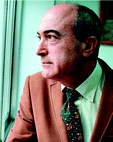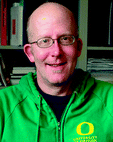Aromaticity: a web themed issue
Nazario
Martín
a,
Michael M.
Haley
b and
Rik R.
Tykwinski
c
aDepartamento de Química Orgánica, Facultad de Ciencias Químicas, Universidad Complutense de Madrid, 28040, Madrid & IMDEA-Nanoscience, 28049, Madrid, Spain. E-mail: nazmar@quim.ucm.es
bDepartment of Chemistry & Materials Science Institute, University of Oregon, Eugene, Oregon, 97403-1253, USA. E-mail: haley@uoregon.edu
cDepartment of Chemistry and Pharmacy & Interdisciplinary Center of Molecular Materials (ICMM), University of Erlangen-Nuremberg, Henkestrasse 42, 91054 Erlangen, Germany. E-mail: rik.tykwinski@chemie.uni-erlangen.de
Abstract
 Nazario Martín | Nazario Martín is Professor of Chemistry at the University Complutense of Madrid and vice-director of IMDEA-Nanoscience Institute. His research interests focus on molecular and supramolecular chemistry of fullerenes, carbon nanotubes and graphenes, in the context of chirality, photovoltaics and nanoscience. |
 Michael M. Haley | Michael M. Haley is Professor of Chemistry at the University of Oregon and is currently head of the department. His research focuses on coarctate reactions, organic electronic materials, the supramolecular chemistry of phenyl-acetylene scaffolding, and other unusual aromatic and anti-aromatic systems. |
 Rik R. Tykwinski | Rik R. Tykwinski is Chair of Organic Chemistry at the University of Erlangen-Nuremberg. His research interests center on synthetic carbon allotropes, organic semi-conductors, and conjugated oligomers. When not in the office, he is most likely entertaining his two sons or out on his mountain bike. |
The concept of aromaticity, as all chemists know, dates back to the late 1800s to the time of August Kekulé. His now-famous dream of a snake eating its own tail is said to be how he arrived at the structure of benzene. Whether or not this event really happened, or if he was influenced by Scottish chemist Archibald Scott Couper and/or Austrian chemist Josef Loschmidt, the fact remains that for over 125 years now the chemistry of “aromatic” molecules has remained a vibrant avenue of research.
The collected articles in this web themed issue illustrate vividly the wide variety of research under the broad banner of “aromaticity”. The synthesis of new aromatics remains a founding principle for many of these studies, whether as “simple” as new methods to prepare phenanthrenes or as “complex” as the assembly of pillar-arenes or boroxine cyclophanes. As several contributions show, aromaticity has moved well beyond the realm of purely hydrocarbons to encompass heteroatomic rings systems such as naphthodifuran, borepin and azaborine. No longer are aromatics confined to the “flat lands” of planarity; rather, they can exhibit significant curvature as featured in the articles describing buckybowls, fullerenes, and carbon nanotubes. The promise of novel optical and electronic properties for use in organic materials is a major driver in modern aromaticity research, as illustrated by contributions on porphyrins, oligofurans and diazatetracenes.
In summary, despite the variety of methods currently used to define the concept of aromaticity, it is still an open question that, no doubt, will bring new discussions and excitement to the chemical community for the coming years. It is our hope that this web themed issue leaves the reader with the impression that there is really no limit to the potential impact of aromatic molecules across the chemical sciences, thus contributing and encouraging scientists to this debate. This is certainly the opinion held by the editors of this issue!
| This journal is © The Royal Society of Chemistry 2012 |
